Horologium constellation is a small constellation made up of mostly faint stars. It has an area of 249 square degrees, occupying only about 0.603% of our sky. Out of the 88 modern constellations, it ranks as the 58th constellation in terms of size.
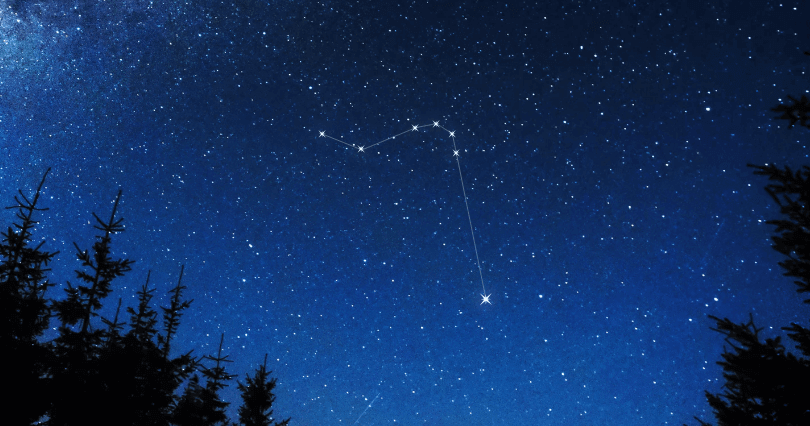
Unlike other constellations that were already charted in the Almagest as early as the second century, Horologium is rather a newcomer. But it does not mean that it did not exist in the night sky before. It was not included in the 48 constellations of Ptolemy because the constellation of Horologium was not visible from other areas in the northern hemisphere.
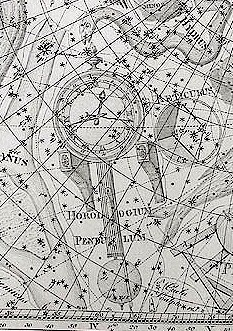
The 88 modern constellations today are set and recognized by the International Astronomical Union (IAU). Before that, the list of constellations had undergone many changes. While some did not make it and are not recognized anymore, some were added and remained so today. Such is the case for Horologium.
What’s In a Name?
The name Horologium is from the Latin hōrologium meaning “the pendulum clock.” Today, we can simply refer to the constellation as “The Clock.” Like other constellations, it is often shortened and abbreviated in some texts. The abbreviation for Horologium is “Hor” and its genitive is “Horologii.” The genitive name is what we often hear when we talk about stars in a constellation.
The celestial clock was added by Nicolas Louis de Lacaille. He described the relatively new constellation as “a clock with pendulum and seconds hand.” Because of that, the constellation was initially named Horologium Oscillitorium in honor of Christiaan Huygens, the person who invented the pendulum clock.
Quick Check: Nicolas-Louis de Lacaille and Christiaan Huygens
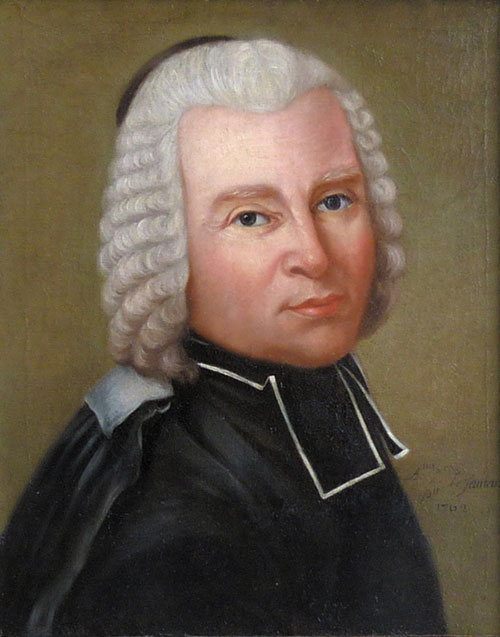
The constellation of Horologium is one of the newer constellations. It was added in the 18th century by Nicolas-Louis de Lacaille. Lacaille was a French astronomer who was appointed by the French Academy of Sciences to observe the southern sky. He made his observations in the Cape of Good Hope. And in his two years of stay there, he added and named 14 new constellations!
Most of Lacaille’s constellations were named in honor of scientific instruments. He chose to name them that way because thinks that they are “the principal figures of the arts.” They are a tribute to the Age of Englightenment.
The works of Nicolas-Louis de Lacaille in the southern sky remain relevant today as they are part of the 88 modern constellations. The names of the constellations are made shorter and simpler so we can easily remember them.
The names of these constellations now are as follows:
- Antlia
- Caelum
- Circinus
- Fornax
- Horologium
- Mensa
- Microscopium
- Norma
- Octans
- Pictor
- Pyxis
- Reticulum
- Sculptor
- Telescopium
The 14 constellations above are the Lacaille Family group of constellations in honor of Nicolas-Louis de Lacaille.
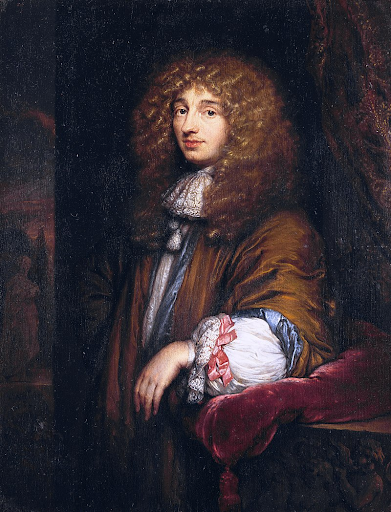
Since Horologium is a newer constellation as compared to the others, it does not have any mythology associated with it. No stories about gods or goddesses will entertain us why this constellation came to be in the night sky. However, the story of the Dutch inventor Christiaan Huygens and the pendulum clock is just as fascinating as it is inspiring.
What Does Horologium Look Like?
The constellation Horologium is outlined by six stars not brighter than the third magnitude. But even so, we can still spot Horologium if we know what it looks like. The form of the celestial clock simply looks like this:
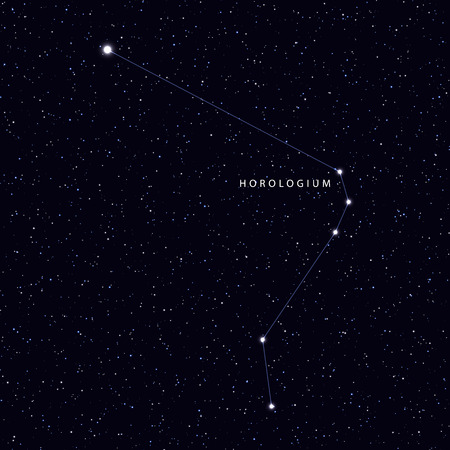
Other sources have 7 stars forming the outline of Horologium if we include the slightly out-of-line star that is R Horologii. The appearance does not differ that much, just different versions and interpretations. This is what makes it fun because there is just no wrong answer when it comes to the form of a constellation!
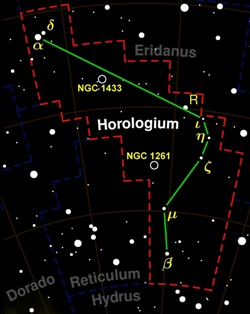
We can easily see the part of the constellation that forms the pendulum. It is hard to miss because it has the brightest star in the entire Horologium constellation. The pendulum looks as if it is swinging in the night sky! This is how the constellation of Horologium fits in the shape of the pendulum clock:
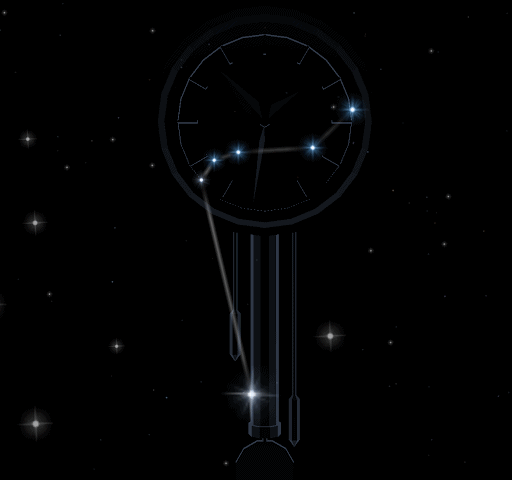
Where To See the Horologium Constellation
Horologium is a constellation in the southern sky. It is located in the first quadrant of the southern hemisphere (SQ1). Specifically, it is in 3 hours right ascension and -60 degrees declination in the celestial sphere. From here on Earth, we can see it if we are between latitudes +30° (north hemisphere) and -90° (south hemisphere). The whole constellation can be seen in places south of 23° north.
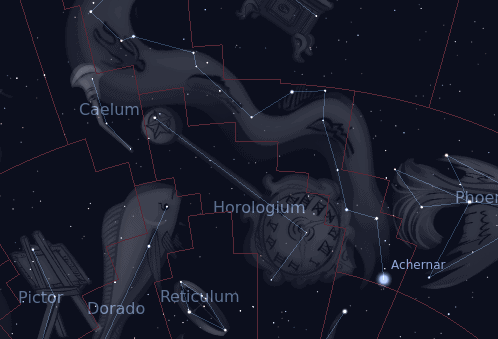
Horologium and Its Neighbors
Since Horologium is made up of mostly faint stars, it can be a little challenging to spot. But if we know how to look, surely it will become easier. We can use our knowledge like knowing our latitude and the celestial clock’s position in the night sky. On top of that, we can use other constellations near it as a reference.
Since the constellation of Horologium is relatively small, it is bordered by only five constellations. These are Eridanus the River, Hydrus the Male Water Snake, Reticulum the Reticle, Dorado the Swordfish, and Caelum the Engraving Tool.
By looking at the photo above, we can see that Horologium is close to the bright star Achernar. Achernar is the brightest star in the Eridanus constellation and is the 9th brightest in the entire sky! We can use this bright blue star to indicate that we are already close to the constellation of Horologium.
When To See the Horologium Constellation
The constellation of Horologium is a seasonal constellation. We cannot see it in the night sky all year round. The best time for us to see it is during winter, in the month of December at about 9 pm.
Horologium and Its Stars
The stars in Horologium are relatively fainter as compared to other constellations. It does not have any stars brighter than the third magnitude. It has six main stars and four stars with planets. Horologium has no formally named stars but the main ones are in the Bayer designation.
In the 19th century, an astronomer named Francis Baily removed two star designations previously assigned by French astronomer Nicolas Louis de Lacaille. These two stars were known before as Epsilon Horologii and Theta Horologii. According to Baily, the stars are not bright enough to be named.
Now, let us get to know the stars that make up the outline of the celestial clock as well as other interesting ones within its borders. We can refer to the constellation chart below to locate some of these stars.
1. Alpha Horologii (α Horologii)
Alpha Horologii is a K-type star that has evolved into a giant star. It has moved away from the main sequence. As a result, it has expanded and cooled off. In fact, it is cooler than our Sun, having an effective temperature of 5,028 K.
Alpha Horologii is the brightest star in the Horologium constellation. In the constellation outline, this star marks the pendulum of the celestial clock. We can see it in the naked eye because it has an apparent magnitude of about +3.85. The mass of this solitary star is around 1.55 times that of the Sun’s. It is about 115 light-years away from us.
2. Beta Horologii (β Horologii)
Beta Horologii is a solitary star. It is an A-type giant that is suspected to be a metallic-line star. It has an apparent magnitude of about 4.98, which makes it faintly visible in our unaided eyes. Though it is not that bright, it is the third brightest star in the Horologium constellation. This star has an oblate shape because it spins relatively faster. It has around 1.40 times the radius of our Sun, with an effective temperature of 8,303 K.
Beta Horologii has a distance of about 312 light-years from our Sun and is moving away from it at a speed of +24 km/s.
3. Gamma Horologii (γ Horologii)
Gamma Horologii is a G-type star. It is moving away from the main sequence to become a subgiant or a giant star. Since it has an apparent magnitude of +5.74, we can see it faintly in the naked eye. It is radiating at about 17 solar luminosities, with a sub-solar metallicity. This star is about 183 light-years distant from our Sun but is moving closer to it.
4. Delta Horologii (δ Horologii
Delta Horologii is located near Alpha Horologii. It is a binary star system with an apparent magnitude of 4.93, making it the second brightest star in the constellation of the celestial clock. This star system is about 179 light-years away from our Sun. Its components are called Delta Horologii A and Delta Horologii B.
- Delta Horologii A (δ Hor A)
Delta Horologii A has a stellar classification of A9 V. It is the primary component of the Delta Horologii star system. This white star has an oblate shape and a bulge in its equator as a result of it being a rapid rotator. It has a mass 1.4 times that of the Sun’s and is said to be 768 million years old.
- Delta Horologii B (δ Hor B)
Delta Horologii B is the dimmer secondary in the Delta Horologii star system. We cannot see it in the naked eye because it has an apparent magnitude of 7.29. The rotational velocity of this star is about 51.7 km/s. It is much slower than the primary star’s 220 km/s.
5. Zeta Horologii (ζ Horologii)
Zeta Horologii is a spectroscopic binary star. Overall, the system has a combined apparent magnitude of 5.20. It is 160 light-years distant from our Sun. The two stars in the system have an orbital period of about 13 days. These stars are designated Zeta Horologii A and B. They are both main-sequence stars in the F class.
6. Eta Horologii (η Horologii)
Eta Horologii is one of the stars that make up the outline of the constellation Horologium. It is a fifth-magnitude binary star system that is faintly visible to our unaided eyes. The primary is an A-type star while the secondary is an F-type star. Both components are in the main sequence. Eta Horologii is roughly 149 light-years away from our Sun.
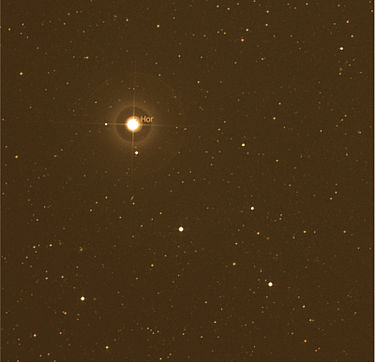
7. Iota Horologii (ι Horologii)
Iota Horologii is an F-type dwarf star. It has an apparent magnitude of about 5.40. In the outline of Horologium, this star is situated in the middle of the bright star R Horologii and another 5th magnitude star Eta Horologii. It is located at a distance of about 56.5 light-years from us.
Iota Horologii is one of the four stars in the constellation of Horologium discovered to have an exoplanet. The exoplanet in this star is named Iota Horologii b or more commonly called HR 810 b.
8. Lambda Horologii (λ Horologii)
Lambda Horologii is an F-type star that has evolved to be a giant. The apparent magnitude of this star is about 5.35. We can see it faintly in the naked eye. It is 1.4 billion years old and has a radius 2.74 times that of the Sun.
Lambda Horologii is a fast spinner star having a projected rotational velocity of about 140 km/s. It is approximately 155 light-years away from us.
9. Mu Horologii (μ Horologii)
Mu Horologii has an apparent magnitude of 5.11. It is an F-type star that is becoming a subgiant or a giant. It has an age of nearly two billion years old. This solitary star has a mass of 1.5 solar masses and is radiating at the luminosity of 13 Suns. It is roughly 141.6 light-years distant from the Sun.
10. Nu Horologii (ν Horologii)
Nu Horologii is a white-hued main-sequence star. This fast-spinning star has a stellar classification of A2 V. It has an apparent magnitude of about 5.25 so it is visible to the naked eye especially in rural areas. This star is much younger than the Sun. While the Sun is about 4.6 billion years old already, Nu Horologii is just about 540 million years of age. Even with that
Compared to the Sun, Nu Horologii is greater than the Sun in terms of mass and size. It radiates with the brightness of 16.7 Suns and is located at a distance of about 169 light-years from our planet.
11. TW Horologii
TW Horologii is a red giant carbon star. The atmosphere of a carbon star is richer in carbon than in oxygen. Its apparent magnitude changes between 5.52 and 5.95 because it is a semiregular variable star. It is 1, 370 light-years away from us.
12. R Horologii
R Horologii is a Mira variable star. A Mira variable is a red giant star that is pulsating in a period of more than a hundred days. It is also in the late stage of its life as a star. Its apparent magnitude varies significantly between 4.7 to 14.3. The pulsation period of R Horologii takes more than 400 days. It is located at a distance of about 1,000 light-years from us.
13. Gliese 1061
Gliese 1061 is also called GJ 1061. It is an M-type dwarf star. It is less bright than the Sun as its solar luminosity is only 0.1%. Though it is located at a distance of just about 12 light-years away, we cannot see it in the naked eye because it is a small and dim star. It has an apparent visual magnitude of 13.03.
A planetary system was discovered in Gliese 1061. Three exoplanets are orbiting this star. They are designated Gliese 1061 b, Gliese 1061 c, and Gliese 1061 d.
14. HD 27631
HD 27631 is a G-type star like our Sun. This star is relatively dim as its apparent magnitude is about 8.24. It has a mass 94% that of the Sun’s and is estimated to be about 4 billion years old. It is roughly 164.3 light-years away from our planet.
HD 27631 is one of the stars in the constellation Horologium to host a planet. The exoplanet orbiting it is designated as HD 27631 b.
Planets in Horologium Constellation
Four stars in Horologium are discovered to host exoplanets. These stars are Iota Horologii, Gliese 1061, HD 27631, and WASP-120. For a more interactive experience with these exoplanets, we can check them at NASA’s exoplanet catalog. Below are photos taken from that catalog.
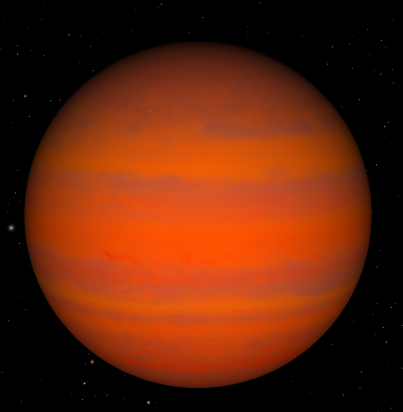
HR 810 b (Iota Horologii b)
Iota Horologii b is more commonly known as HR 810 b. It orbits the star Iota Horologii in the Horologium constellation. This is a gas giant with a mass of 2.27 Jupiters.
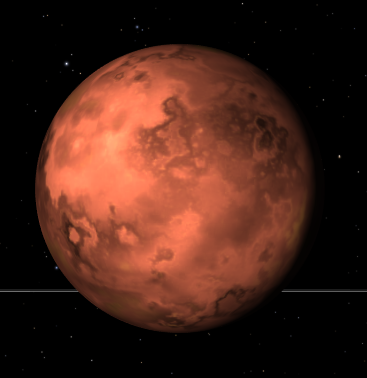
Gliese 1061 b
We can also call Gliese 1061 by GJ 1061. This super-Earth exoplanet is one of the three planets that orbit around the star Gliese 1061 in the Horologium constellation. It has a mass of 1.37 times that of the Earth’s. It has an orbital radius of 0.021 AU and completes it in a period of 3.2 days.
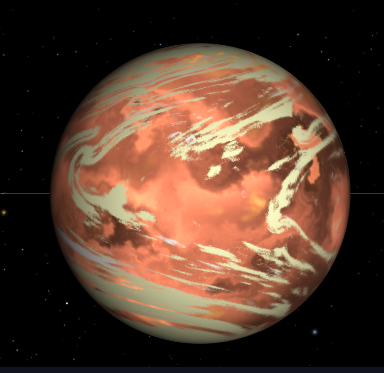
Gliese 1061 c
Gliese 1061 c, also known as GJ 1061 c, is one of the exoplanets in the Horologium constellation. It was discovered in 2020. This super-Earth orbits its star in a period of 6.7 days. It has a mass of 1.74 Earths. This exoplanet is considered potentially habitable.
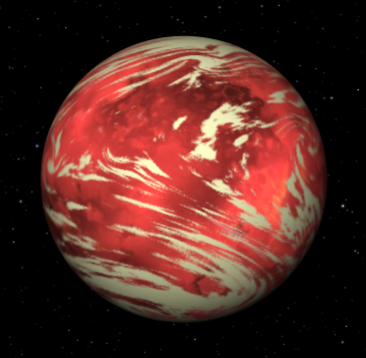
Gliese 1061 d
Gliese 1061 d is also called GJ 1061 d. It is a super-Earth with a mass 1.64 times our planet’s. It has an orbital period of 13 days and was discovered in 2020. Gliese 1061 d is a potentially habitable exoplanet.
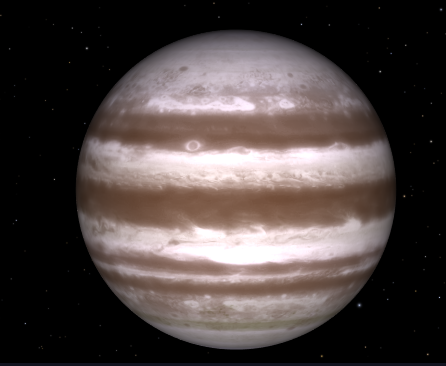
HD 27631 b
HD 27631 b is an exoplanet discovered in 2012. It orbits around the yellow star HD 27631 in the southern constellation of Horologium. This exoplanet is a gas giant with a mass of 1.494 Jupiters. It orbits its star for a period of 6 years.
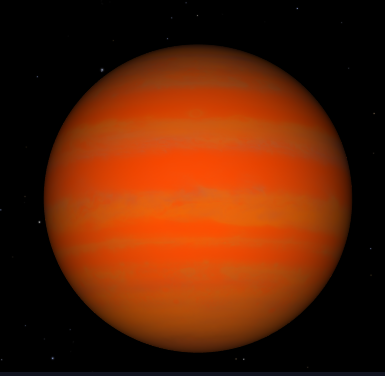
WASP-120 b
WASP-120 b orbits the F-type star WASP-120, located 1,425 light-years away from our planet. This gas giant was discovered in 2016. This exoplanet is much bigger than Earth as it has a mass of 4.85 Jupiters. It orbits its star in a period of 3.6 days.
Deep-sky Objects in Horologium Constellation
Aside from the fascinating stars and exoplanets in Horologium, it also has many interesting deep-sky objects. There is no Messier object identified in this constellation. No meteor shower is also associated with it. Even so, star clusters and galaxies are plenty in the realm of the celestial clock. The barred spiral galaxy NGC 1483 is sometimes associated with the constellation though it primarily belongs in the constellation of Dorado.
Large groups of stars or star clusters can be found in Horologium. These groups can either be open clusters or globular clusters. Interestingly, there is also a group of galaxies called galaxy clusters. A bunch of these galaxy clusters form what is called a supercluster.
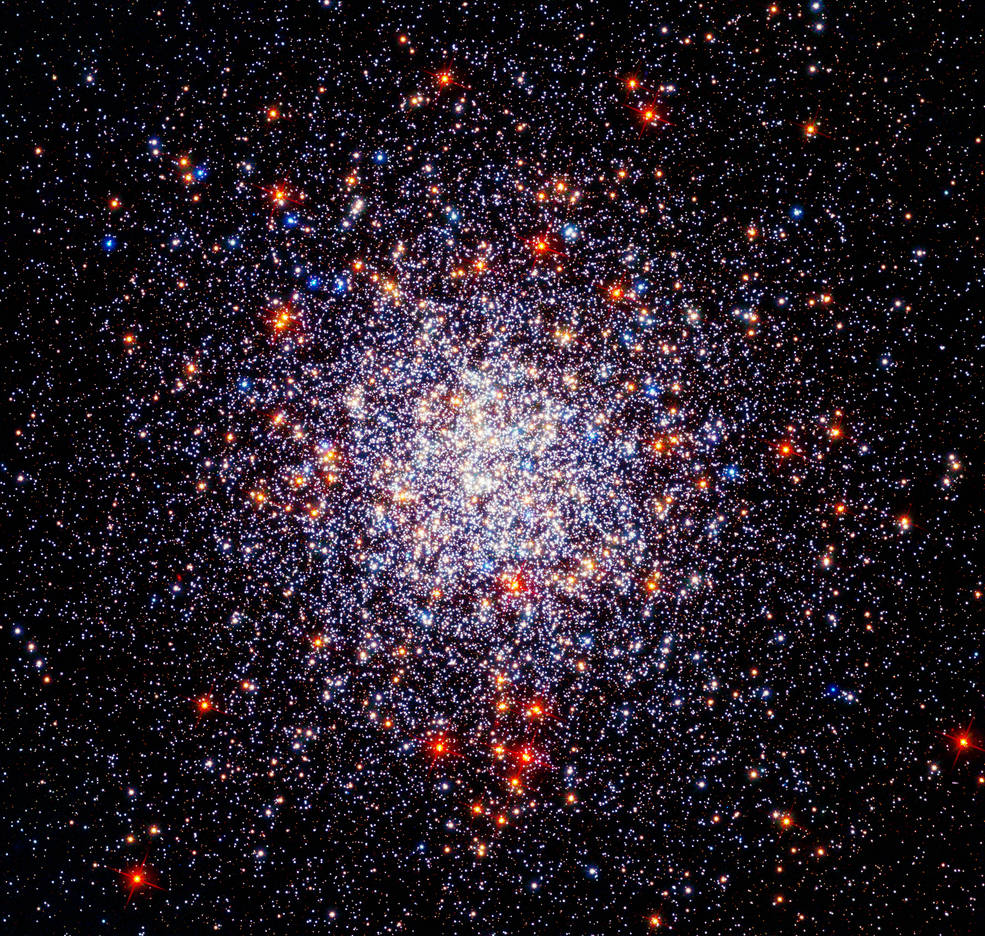
NGC 1261
NGC 1261 is labeled Caldwell 87 in the Caldwell catalogue. It is a globular cluster discovered by James Dunlop. With an apparent magnitude of 8.3, we cannot see it in the naked. A small telescope can help us in locating it. NGC 1261 is about 10 billion years old already. It is about 50,000 light-years away from our planet.
By studying this deep-sky object, astronomers have discovered the possibility that stars in globular clusters may be of different ages. This is contrary to what was previously believed.
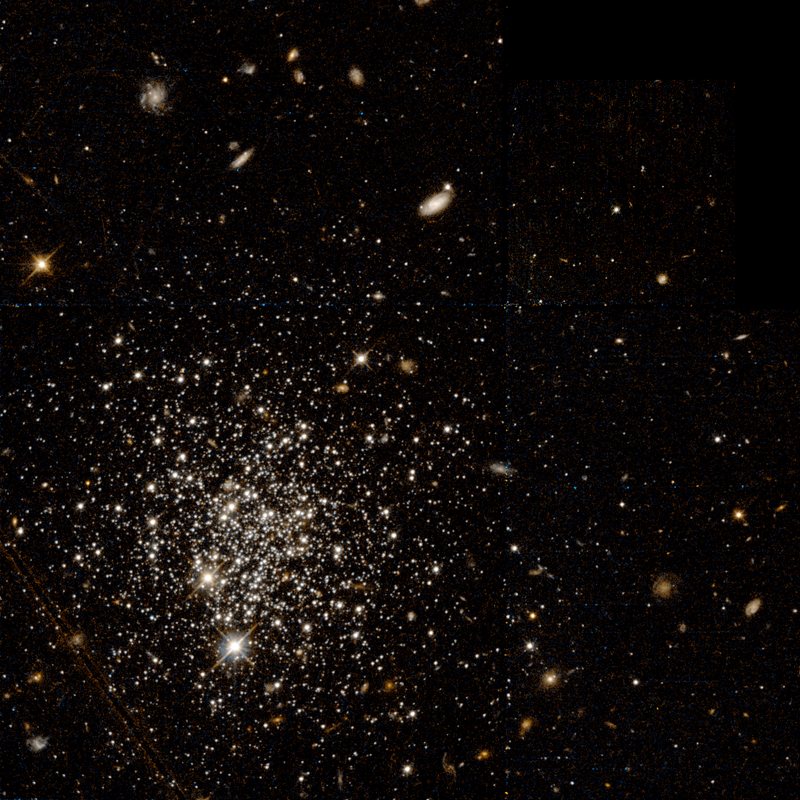
Arp-Madore 1
Arp-Madore 1 is another globular cluster in Horologium. It is a distant deep-sky object, located 402,000 light-years away from our planet. Arp-Madore 1 got its name from its discoverers Halton Arp and Barry F. Madore.
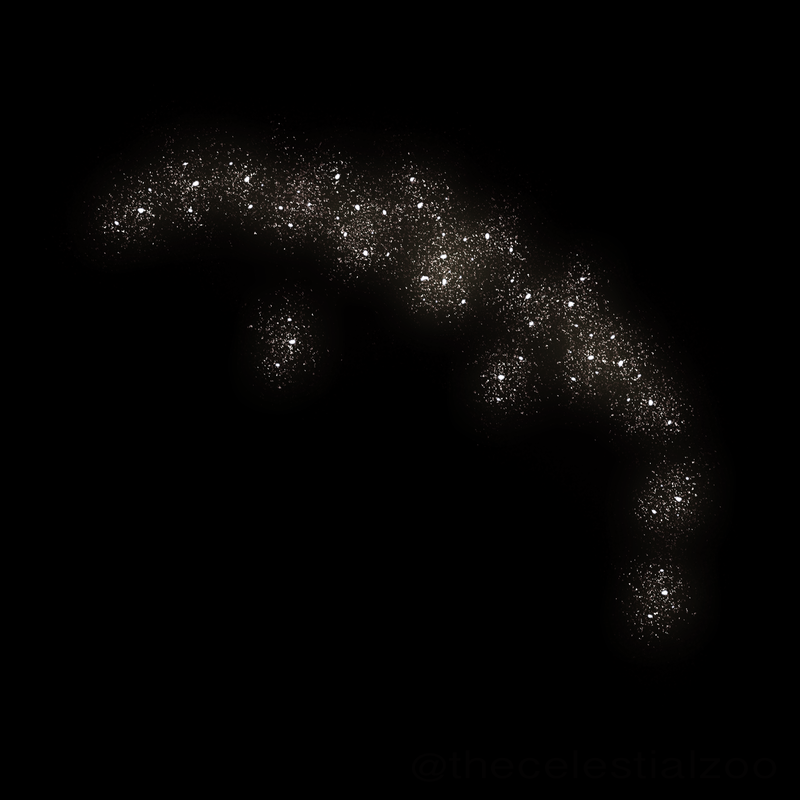
Horologium-Reticulum Supercluster
Horologium-Reticulum Supercluster is one of the largest and most massive clusters. It stretches over 550 million light-years across. From here on Earth, the nearest part of it is 700 million light-years distant while the furthest is 1.2 billion light-years away. The huge difference in the distance just tells us how big this supercluster is!
The picture above shows a representation of the massive Horologium Supercluster. It contains both dwarf and giant galaxies totaling about 5,000 groups of galaxies.
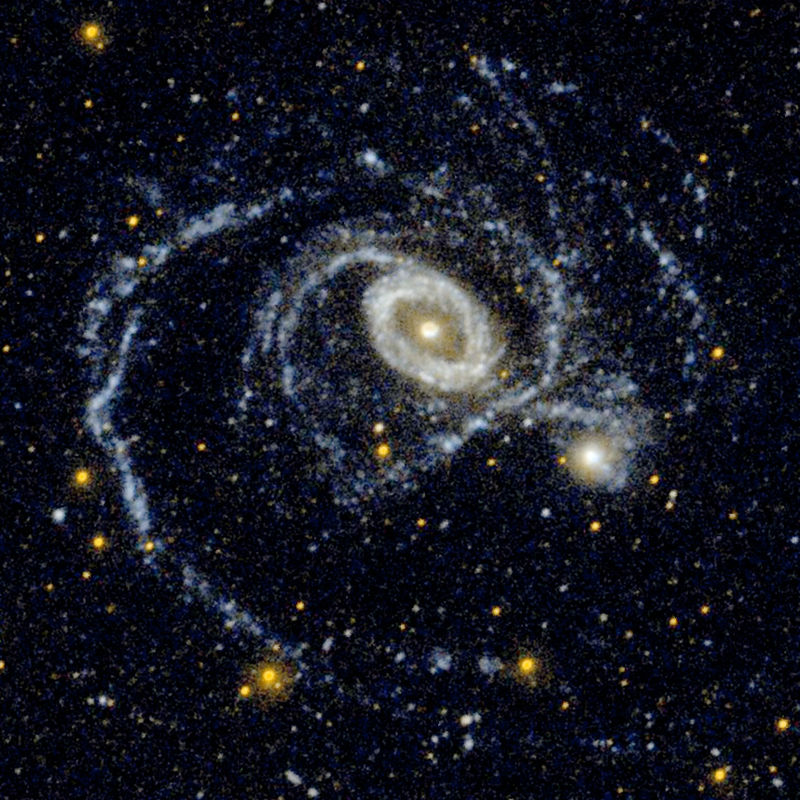
NGC 1512 and NGC 1510
In the picture above we can see two galaxies interacting with each other. The big one is NGC 1512 while the small one is NGC 1510. They are about five arcmins away from each other.
The barred spiral galaxy NGC 1512 influences the dwarf lenticular galaxy NGC 1510. The merging of these two galaxies is already 400 million years in the process. Interestingly, NGC 1512 has two rings which are unlike other galaxies. Being the much larger one, NGC 1512’s gravitational tidal forces influence the dwarf galaxy. Their interaction has caused some stars to be formed.
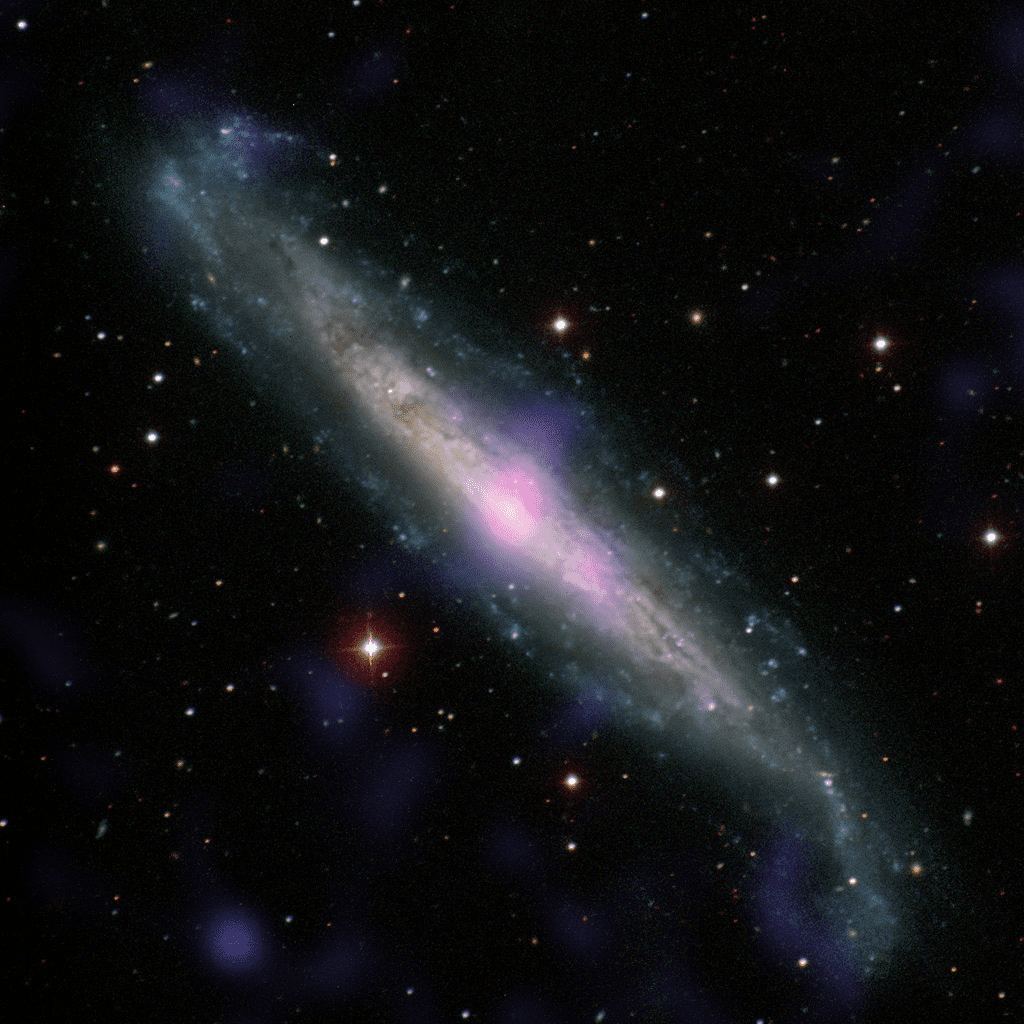
NGC 1448
NGC 1448 is a spiral galaxy with an active galactic nucleus. There is a black hole hidden in this galaxy. It is clouded by gas and dust. This galaxy is home to many young stars and is 38 million light-years away from us.
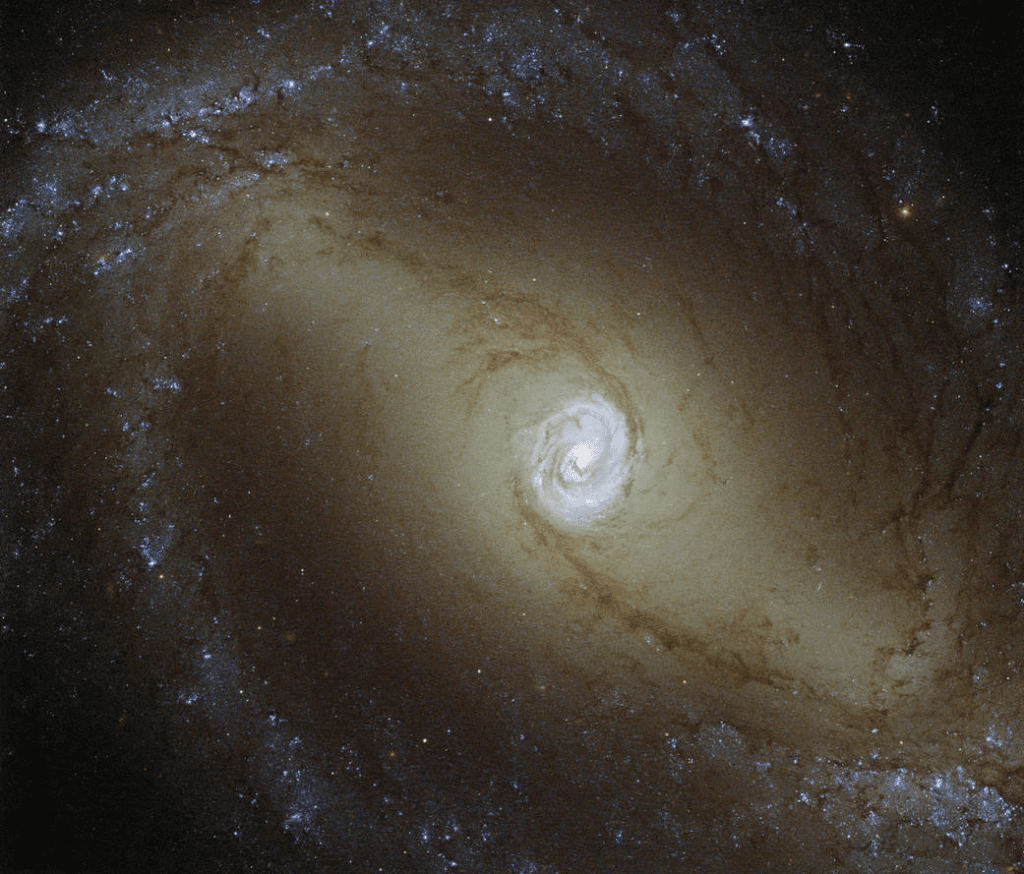
NGC 1433
NGC 1433 is a barred spiral galaxy. Sometimes it is also called Miltron’s Galaxy. It is roughly 32 million light-years distant from us. There is a central black hole in this galaxy where astronomers have discovered a spurt of material flowing away. NGC 1433 is classified as a Seyfert galaxy, a very active galaxy type. It belongs to the galaxy group called the Dorado Group along with NGC 1448. This group of galaxies is a lot bigger in size as compared to our Milky Way’s Local Group.